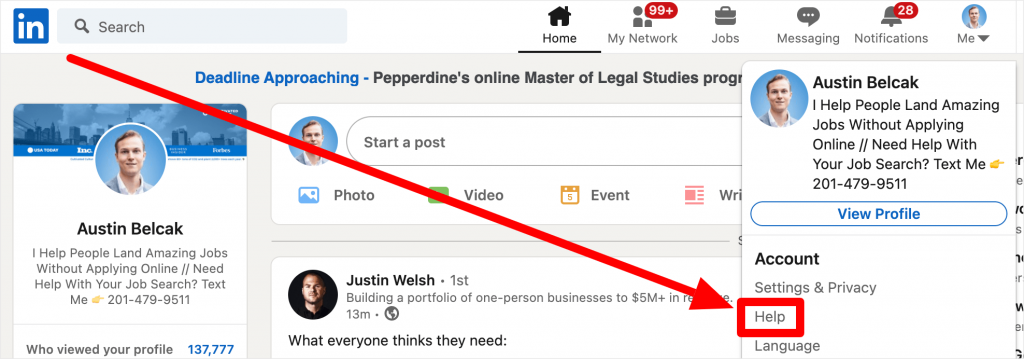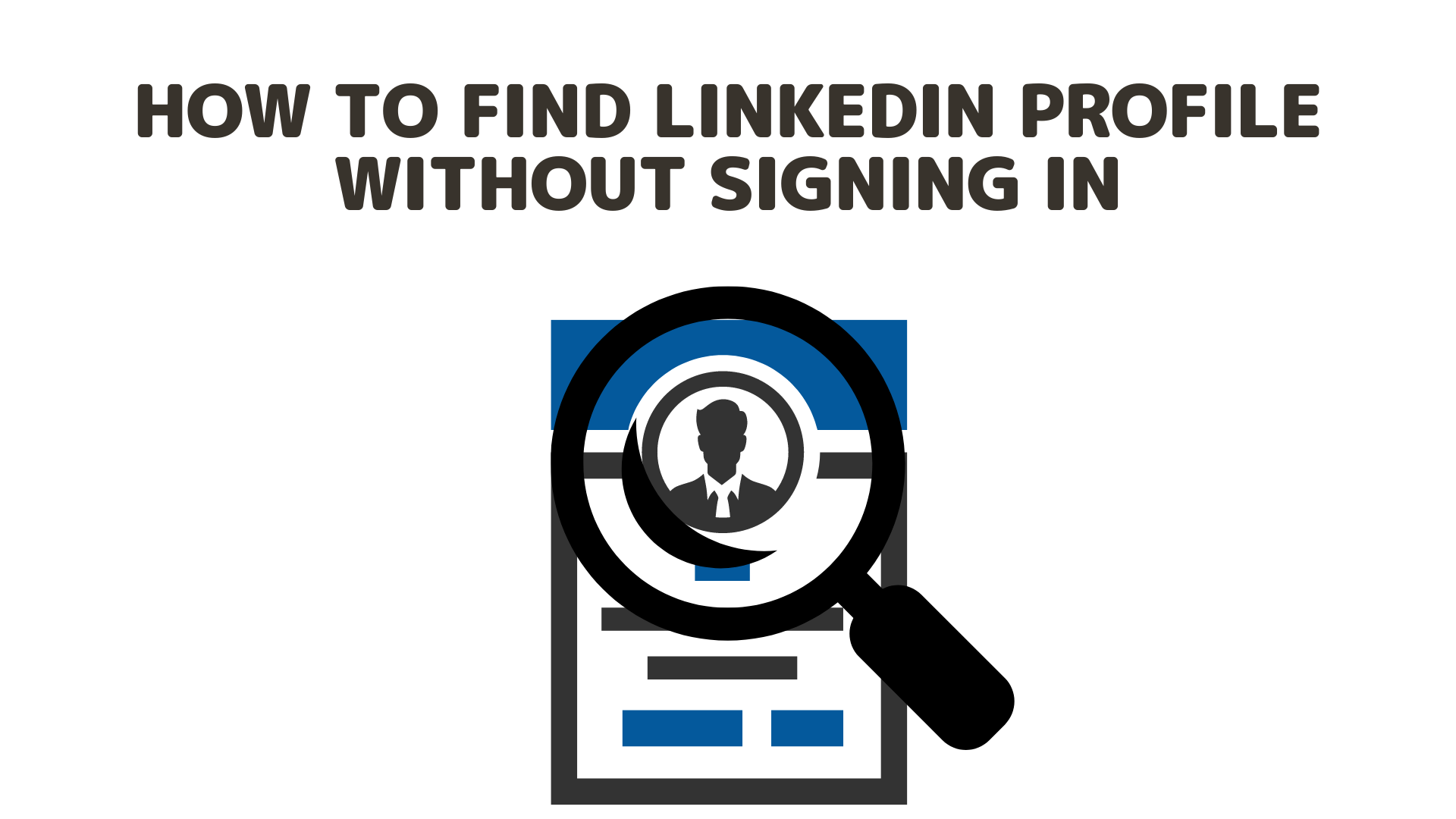Contacting LinkedIn support can feel daunting, especially when you can’t log in to your account. Whether you’ve forgotten your password, encountered a technical glitch, or have a question about your profile, there are ways to reach out for help. In this post, we’ll explore practical tips and tricks that make contacting LinkedIn support easier, even without logging in. Let’s dive in!
Understanding LinkedIn Support Options

When it comes to LinkedIn support, knowing your options is crucial. Here’s a breakdown of the various ways you can get assistance:
- Help Center: Start by visiting the LinkedIn Help Center. It’s a treasure trove of resources, including articles and FAQs covering a wide range of topics. You might find the answer to your question without needing to contact support directly.
- Contact Form: If you need to reach out, LinkedIn provides a contact form. Fill in the details about your issue, and make sure to specify that you cannot log in. This will guide them to assist you more effectively.
- Social Media: Sometimes, getting a response through social media can be quicker. Try tweeting at @LinkedInHelp on Twitter. They often respond to inquiries, especially if you mention your issue clearly.
- Email Support: Although LinkedIn doesn’t widely advertise an email support option, if you have access to any previous correspondence from them, you can reply directly to that email. Just be sure to explain your situation clearly!
- Community Forums: Engaging in community forums can also be beneficial. Check out platforms like Reddit or specialized LinkedIn groups. Someone else might have faced a similar issue and can offer insights.
Each of these options caters to different needs, so choose the one that fits your situation best. Remember, when contacting support, provide as much detail as possible about your issue—this helps them assist you effectively.
In conclusion, while reaching out to LinkedIn support without logging in can be challenging, the right approach and resources can simplify the process. Don’t hesitate to take advantage of the available support options!
Also Read This: How to Update Job Preferences on LinkedIn and Tailor Your Job Search
3. Methods to Contact LinkedIn Support without an Account

If you’re facing issues with LinkedIn but don’t have an account or can’t log in, don’t worry! There are still ways to reach out to their support team. Here are some effective methods to get the assistance you need:
- Email Support: One of the easiest ways to contact LinkedIn support is by sending them an email. You can reach out to [email protected]. When you write your email, be sure to include as much information as you can about your issue. The more details you provide, the easier it will be for the support team to assist you.
- Social Media Channels: LinkedIn has a presence on various social media platforms. You can tweet at them on Twitter via @LinkedInHelp. Many users find that reaching out through social media gets quicker responses. Just keep your message clear and concise!
- Contact Forms: Although you may not be able to log in, LinkedIn occasionally offers specific contact forms for various issues. You can search for “LinkedIn contact form” in your browser. Fill out the required fields with accurate information about your issue, and submit it. Be patient, as responses may take some time.
- Community Forums: While this is not a direct line to LinkedIn support, you can often find answers to common issues in community forums. Websites like Reddit have active discussions about LinkedIn. You may find someone who experienced a similar issue, and their insights could help you resolve your problem.
Remember, while these methods may take a little longer than contacting support through an account, they can still be effective. Just be persistent and provide clear details about your situation!
Also Read This: How to Change Your LinkedIn Email Address
4. Using the LinkedIn Help Center

The LinkedIn Help Center is a treasure trove of information, especially if you're navigating issues without an account. It’s designed to assist users with a wide range of queries, and it’s surprisingly user-friendly. Here’s how to make the most of it:
- Search Bar: Start by using the help center's search bar. Type in keywords related to your issue, such as "account access" or "technical issues." This can lead you to relevant articles and FAQs that might solve your problem without needing to contact support directly.
- Explore Categories: The Help Center is organized into categories, making it easier to find what you need. Categories include “Account,” “Privacy,” “Safety & Security,” and more. Browse through these sections to locate specific answers tailored to your situation.
- Check the FAQ Section: LinkedIn has a robust FAQ section that addresses common concerns. If you’re unsure about a feature, this is a great place to start. You might find quick solutions to your questions, like how to report a problem or manage notifications.
- Utilize the “Contact Us” Option: If you can’t find what you’re looking for in the Help Center, you might find a “Contact Us” option in some articles. Clicking this will often lead you to different ways to reach LinkedIn support, even without logging in.
Overall, the LinkedIn Help Center is a powerful resource that can help you troubleshoot problems and get answers quickly. Dive in, explore, and don’t hesitate to leverage this tool to its fullest!
Also Read This: How to Pass 2FA for LinkedIn Business Accounts at an Agency
5. Reaching Out via Social Media
When traditional support methods feel a bit too formal or slow, reaching out to LinkedIn through social media can be a refreshing alternative. Platforms like Twitter and Facebook allow you to communicate with LinkedIn in a more casual and immediate way.
Why Social Media? Social media is not just for networking; it’s also a powerful tool for customer support. Here’s why you might consider this route:
- Quick Responses: Companies often respond faster on social media than through email or traditional support channels.
- Public Visibility: Your query can be seen by others, which sometimes encourages a quicker response from the company.
- Community Support: You might find others who have had the same issues, allowing you to share experiences and solutions.
To effectively reach out:
- Find the Right Account: Start by locating LinkedIn’s official Twitter or Facebook page. Look for verified accounts to ensure you’re communicating with the right team.
- Be Clear and Concise: When tweeting or posting to their feed, clearly state your issue. For example, "I’m having trouble resetting my password. Can you help?" This gives them all the information they need to provide assistance.
- Use the Right Hashtags: If applicable, use relevant hashtags like #LinkedInHelp to make your message more visible to the support team and other users.
Don’t forget to stay patient! While it’s great to get a quick response, sometimes it can take a little time for customer support teams to catch up with their notifications. Keep your message friendly and polite, and you might be surprised at how quickly they can assist you.
Also Read This: Do I Need a Picture of Me on LinkedIn Reddit: A Discussion on the Importance of Profile Photos
6. Utilizing FAQs and Community Forums
Before contacting LinkedIn support directly, it’s always a good idea to check their FAQs and community forums. These resources can save you time and provide instant answers to common issues.
Why FAQs and Forums are Helpful:
- Self-Service: Many users find that they can solve their issues without ever needing to talk to a support representative.
- Up-to-Date Information: FAQs are often updated with the latest features and troubleshooting tips, reflecting the most current practices.
- Community Insights: Forums allow users to share their experiences and solutions, which can provide unique insights not found in official documentation.
To make the most of these resources:
- Search Effectively: Use specific keywords related to your issue in the FAQs. For example, if you’re having trouble with your profile visibility, type “profile visibility” in the search bar.
- Browse Relevant Categories: LinkedIn’s FAQ sections are organized into categories like “Account and Profile,” “Connections,” and “Job Search.” Navigate through these to find answers tailored to your concern.
- Engage in the Community: If you don’t find an answer, consider posting your question in the LinkedIn Help Community. Engaging with other members can lead to valuable advice and solutions.
Lastly, remember to take notes on the solutions you find. This way, you can reference them later if you encounter similar issues. Utilizing these resources can often provide the answers you need without the waiting game that can come with direct support. Happy networking!
Also Read This: How to Send a Connect Request on LinkedIn and Build Your Professional Network
7. Tips for Effective Communication with Support
When reaching out to LinkedIn Support without logging in, effective communication is key to resolving your issues quickly. Here are some valuable tips to help you articulate your concerns clearly:
- Be Clear and Concise: Start with a brief overview of your issue. For example, "I'm having trouble accessing my account due to a password reset email not arriving." This helps the support team understand your problem right away.
- Provide Relevant Details: Include important information such as your account email, the device you’re using, and any error messages you’ve encountered. For instance, if you see a specific error code, mention it to help the support team diagnose the problem effectively.
- Use a Polite Tone: Remember, the person on the other end is there to help you. A friendly approach can go a long way. Phrases like “I appreciate your help” can create a positive interaction.
- Ask Questions: If something isn’t clear, don’t hesitate to ask for clarification. Phrasing your questions well shows that you’re engaged and want to solve the issue together. For example, “Could you guide me on the steps I should follow next?”
- Follow Up: If you don’t hear back in a reasonable time frame, don’t hesitate to send a polite follow-up message. Mention your previous communication to keep the context clear.
Here’s a quick template you might find useful:
Subject: Assistance Needed with My LinkedIn Account Dear LinkedIn Support Team, I hope this message finds you well. I am reaching out for assistance with my LinkedIn account. I am unable to log in because I haven’t received the password reset email to my address: [[email protected]]. I have checked my spam folder, but I still haven’t seen it. I’m using [device name] and accessing LinkedIn from [location]. Any help you can provide would be greatly appreciated! Thank you for your assistance. Best, [Your Name]
By following these tips, you’ll be more likely to receive a prompt and helpful response that addresses your specific concerns.
8. Conclusion
Contacting LinkedIn Support without logging in might seem like a hurdle, but with the right approach, you can navigate it smoothly. Remember that being clear, concise, and polite can make all the difference. Whether you’re dealing with account access issues, technical problems, or any other concerns, the way you communicate plays a significant role in how effectively your issue gets resolved.
Don’t forget to gather all pertinent information before reaching out, and use the tips for effective communication we’ve discussed. Each step in the process is designed to help you articulate your needs better, leading to quicker resolutions.
While it may seem daunting, know that LinkedIn Support is there to assist you. With a thoughtful message and the right details, you can rest assured that you’re on the path to finding a solution. Happy networking! 🚀
 admin
admin








